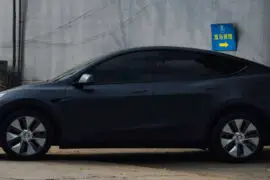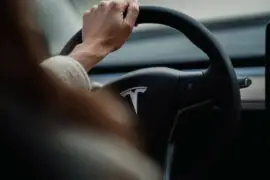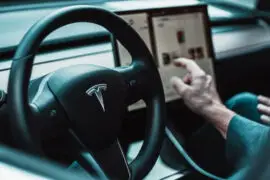Last Updated on May 30, 2023 by Rose Morah
If you’re planning to purchase a Tesla, you probably might be wondering what the best home charging options are.
Well, the best EVs home charging options will mainly depend on:
- An individual.
- How fast you want to charge.
- Whether you rent or own a house.
When it comes to Tesla home charging, you normally have three options:
- Using a 120 Volt/20 amp breaker (NEMA 5-20).
- Purchasing a 240 Volt NEMA adapter.
- Installing a Tesla wall charger.
Note that, when you buy a Tesla, it comes with a mobile connector for charging your Tesla. So, this takes us to the first option of home charging your Tesla. A mobile connector is a portable device that helps you charge your EV.
Related: Reasons Why Your Tesla Is Not Charging At Home (With Solutions).
1. Using a 120 Volt/20 amp breaker (NEMA 5-20)
Most new Tesla owners start with this first option when charging from home. However, this is usually not the best option overall because it charges slower compared to all other options available.
120 Volt/20 amp breaker (NEMA 5-20) only charges at medium to low speeds.
If you plan on charging from home, a 110V outlet is the lowest level of charging you can get for your Tesla.
So, based on my Model Y Range, if I use 110V it takes me about 80 hours of continuous charging to be fully charged (0-100%).
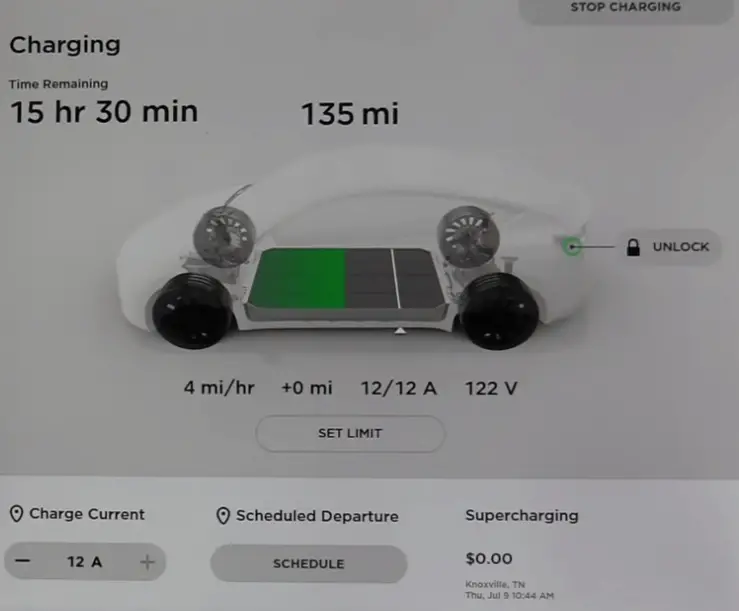
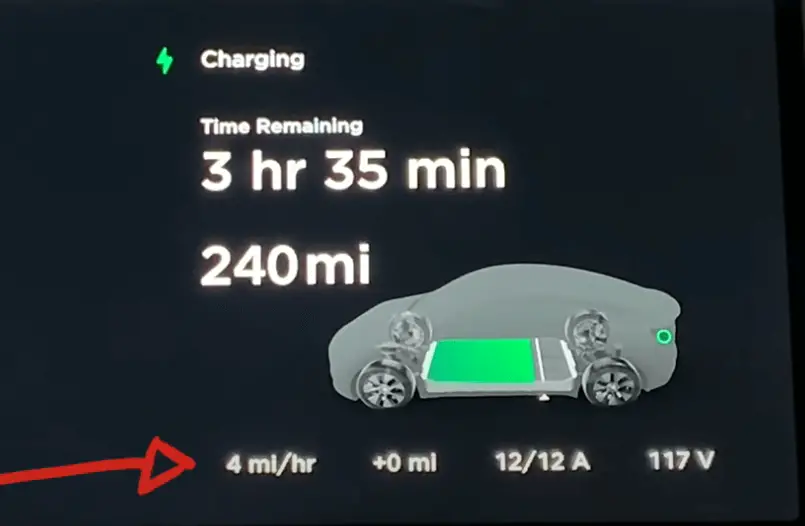
See also:
How To Use The Tesla Energy App (Complete Guide With Pictures).
Does Tesla Autopilot Use More Battery?
Additionally, 120 Volts AC/20 amp breakers usually charge around 2 to 5 miles per hour.
| TESLA MODEL 120 Volts AC/20 amp breaker (NEMA 5-20) | MILES RANGE PER HOUR (MRH) of charge |
| Model 3 | 4 |
| Model S | 4 |
| Model X | 3 |
Related: 7 Things to Consider Before Installing an EV Home Charger (EV Home Charger Installation).
This Tesla home charging option is best:
- If you’re planning to drive for a short distance, like 15 – 20 miles.
- If you do not drive frequently/daily.
In other words, if you decide to home charge solely with this first option, you will need to know:
- How far you will be driving your Tesla.
- How often you will be driving.
- How much battery you will need each and every morning when you wake up.
2. Purchasing a 240 Volt NEMA adapter for home charging
This second charging option is much faster compared to the first home charging option.
When I’m using 240V from the wall my Tesla charges for about 25 miles per hour.
Using a 14- 50 adapter, I get about 30 miles per hour of charge, which would equal 11 hours of charge. This is normally from 20% to 80% of the charge.
| You can have your electrician install NEMA 14-50 on a 50 AMP Breaker if you don’t have one. |
Related:
Tesla Wall Connector VS Mobile Connector.
6 Best EV Home Chargers(EVSE) According to EV Owners and experts.
How Long Does a Tesla Battery Last? (Tesla Battery Degradation).
The following table shows the maximum range per hour you will get from this option:
| TESLA MODEL | MILES RANGE PER HOUR (MRH) of charge |
| 240 volt / 50 amp breaker | |
| Model 3/Y | 30 |
| Model S | 23 |
| Model X | 20 |
| 240 volt / 30 amp breaker | |
| Model 3 | 22 |
| Model S | 17 |
| Model X | 14 |
| 240 volt / 20 amp breaker | |
| Model 3 | 15 |
| Model S | 11 |
| Model X | 8 |
| 240 volt / 15 amp breaker | |
| Model 3 | 11 |
| Model S | 7 |
| Model X | 5 |
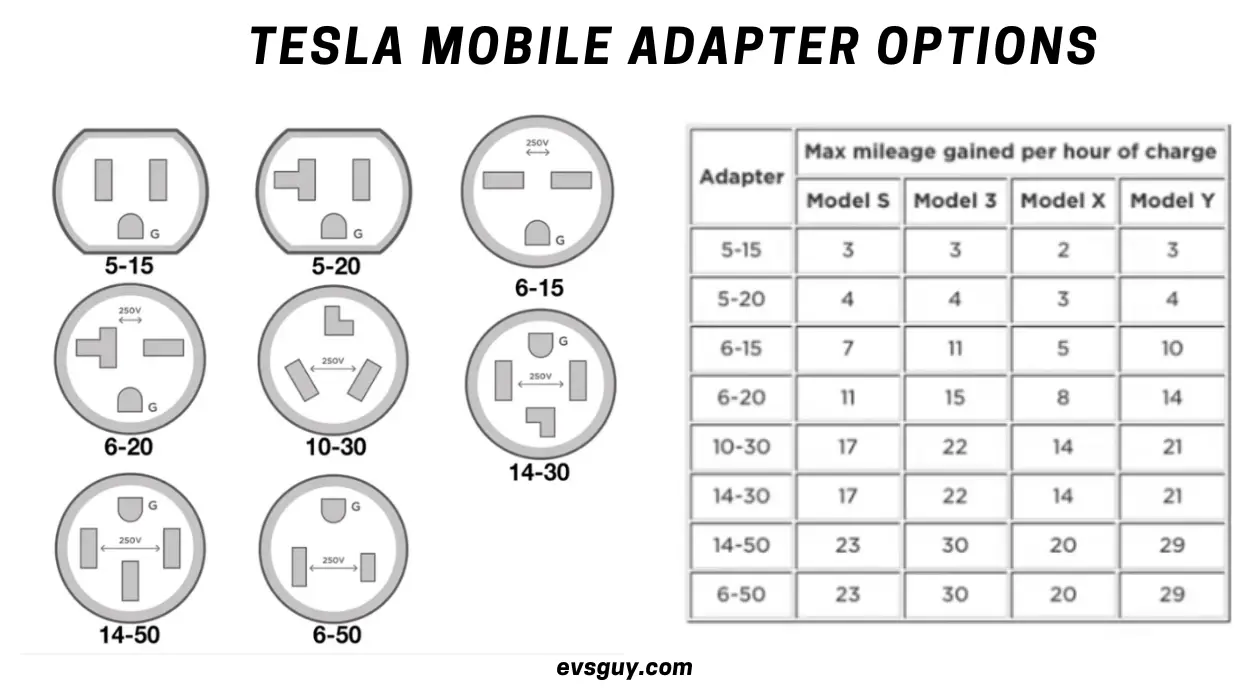
QUICK TIP
If you are charging into a socket that has other things connected to it, you can modify the charge current down to what you want. See the image below.

To get the outlet installation guide, check out the Tesla official website.
You might also like:
4 Ways To Reboot Your Tesla To Help Fix Issues (Soft & Hard Reset).
Tesla Software Updates 2022 (Versions 2022.4.5 & 2022.8.2).
3. Installing a Tesla wall charger
Charging via a tesla wall connector is the fastest option overall when charging from home. It gives you the maximum charge when charging from home.
However, you should note that how much power you get from the wall connector depends on the type of socket you have it hooked up to.

When I’m charging from home using the Tesla wall charger, I normally get about 45 miles per hour. This means that I charge from 0-100% in about 7 hours.
But, of course, this result may not be the same for other Tesla owners because it depends on many factors.
You may also like: Is Tesla Wall Connector Worth It? (Pros & Cons).
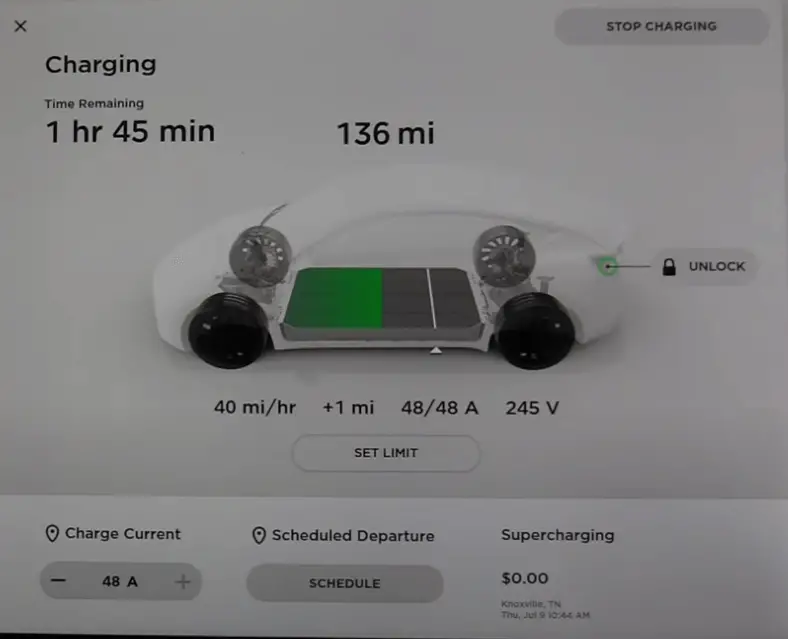
The table below shows the maximum range per hour (HPWC on a 60 AMP Breaker)
| TESLA MODEL | MILES RANGE PER HOUR (MRH) of charge |
| Model 3 | 44 |
| Model Y | 42 |
| Model S | 34 |
| Model X | 30 |
| Model 3SR + | 30 |
So, two main benefits of installing a Tesla home charger:
- It is very convenient.
- it is a faster home charging option.
See also: How To Check Tesla Battery Health/Battery Degradation.
How much is the installation of a Tesla wall charger?
The cost of installing a Tesla wall charger depends on your breaker box/fuse box in the house.
“Breaker box controls the power to each one of the sockets.”
Therefore, the cost of installation is not fixed. Some Tesla owners have paid as little as $100 for installation while others up to $1000 or even more.
This cost is calculated based on:
- How far your breaker box/fuse box is from the garage.
- Labor cost.
- Material cost.
To break it down, if the breaker box is far from your garage or your home charging point, you will spend more on the cost of labor and material.
Vice versa is also true. The closest it, is the cheaper it will cost you to install.
| If you are building a house, you need to carefully think about the location of the breaker box if you plan to own a Tesla in the future. |


